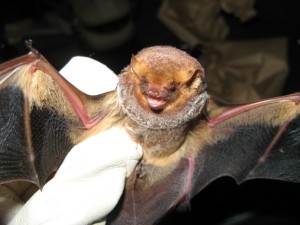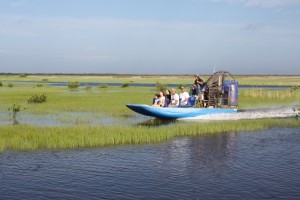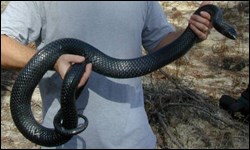 The Everglades is full of creatures including the Seminole bat. This bat is considered to be a “medium” -sized bat weighing in at only 8 to 15 grams with an 11 to 13-inch wingspan. This bat is a deep mahogany in color that is frosted at the tips. Males and females are similar in color. This bat has fur from the tip of its tail to its arms and wrists and shoulders.
The Everglades is full of creatures including the Seminole bat. This bat is considered to be a “medium” -sized bat weighing in at only 8 to 15 grams with an 11 to 13-inch wingspan. This bat is a deep mahogany in color that is frosted at the tips. Males and females are similar in color. This bat has fur from the tip of its tail to its arms and wrists and shoulders.
These bats are considered their own distinct species (Lasiurus seminolus) in the family Vespertilionidae.
In the springtime, the female Seminole bats give birth to usually one baby bat (pup), which means they mate in late fall or early winter. These baby bats stay close to their mother and begin to fly about 3 to 6 weeks after they’re born. After 2 to 3 months after birth, the baby bats can fly and search for food on their own.
Seminole bats are commonly found in pine trees, oak trees, hickory trees, and Spanish moss; they prefer to live in forests. They have also been spotted in lowland cypress stands, river swamps, islands and prairie edges. They can be spotted in the early evening when the temperatures are about 70 degrees. Not only is this bat found in the Everglades, it can be found in many regions of the United States, including: Louisiana, Georgia, Alabama, Mississippi, South Carolina, Texas, Tennessee, Arkansas, and North Carolina.
These bats like to eat flies, beetles, bees, ants, wasps, moths, and leafhoppers. They eat primarily insects.
These bats do not hibernate or undergo large migrations.
These bats have been found by professional moss gatherers inside clumps of Spanish moss. It is believed that moss gathering may threaten these bats (because it’s their habitat), but there has been no studies done on this, as of yet.
If you’re a fan of bats, you’ll want to visit the Everglades closer to the evening to spot them. If you don’t like bats, there are plenty of other animals and birds for you to spot on a trip through the Everglades. Come explore the Everglades by airboat on a ride with Captain Mitch. Captain Mitch’s Airboat Tours give you a glimpse of the Everglades like no other. To book an airboat ride, click here or call 800-368-0065.
Photo courtesy: http://nwdistrict.ifas.ufl.edu
 Captain Mitch has been zipping through the Everglades on an airboat since he was a little tike. He followed in his family’s footsteps and began his own airboat touring company more than 30 years ago. As most people know, airboats are pretty iconic in the Everglades. Airboats are great way to travel in the Park that allow guests access to areas that are not accessible by foot.
Captain Mitch has been zipping through the Everglades on an airboat since he was a little tike. He followed in his family’s footsteps and began his own airboat touring company more than 30 years ago. As most people know, airboats are pretty iconic in the Everglades. Airboats are great way to travel in the Park that allow guests access to areas that are not accessible by foot. Although the Burmese python is an invasive species threatening the Everglades, the wetland does have several native snakes that DO belong in this habitat. One such snake is the eastern indigo snake (Drymarchon corais couperi). This snake is federally threatened.
Although the Burmese python is an invasive species threatening the Everglades, the wetland does have several native snakes that DO belong in this habitat. One such snake is the eastern indigo snake (Drymarchon corais couperi). This snake is federally threatened.





